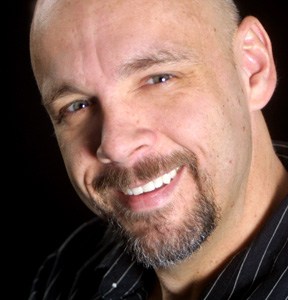Editorial
Front Page - Friday, December 4, 2009
The Critic's Corner
David Laprad

I guess if I’m to understand the appeal of “The Twilight Saga,” I’m going to have to read the novels by Stephenie Meyers, because based on the movies, which are now number two with the theatrical release of “New Moon,” the popularity of this series escapes me.
Do fans identify with Bella, the female (and currently human) half of the couple around which this series revolves? I can’t imagine why. Is there a character in popular film more miserable or self-absorbed? More than that, I don’t understand what Edward sees in Bella. Is he drawn to her perpetual thousand-yard stare? Her inability to speak without making you wonder if the words are stuck in her throat? Her obsessive compulsive tendencies?
Her one redeeming quality is that she KNOWS she’s self-absorbed. “I’m being selfish,” she says in “New Moon” to Jacob, a friend who’s attracted to her. She’s too busy mourning the loss of Edward to return Jacob’s feelings but doesn’t want her friend to leave her, either.
If Bella were written as a satire of teen melancholy, her character would make sense, but based on the movies, “Twilight” is as devoid of wit as its vampires are a pulse.
Are fans attracted to Edward Cullen, a century-old vampire in a desiccated teenage body? His skin is so pale, I want to wrap a blanket around me every time he appears onscreen. When Cullen takes off his shirt in “New Moon,” his body LOOKS over 100 years old. As Bella says in jest earlier in the movie, “Maybe I shouldn’t keep dating such an old man. It’s gross.”
Perhaps fans are drawn to the romance between these two brooding Ellowynes. But why? Do they ever look happy together? Has a single moment of hope ever passed between them? Have they ever just hung out and had a good time? With the exception of some lighthearted banter at the beginning of “New Moon,” their relationship is awash in misery and sexual repression.
And I can’t believe fans find the “Twilight” mythos intriguing. While Meyers was within her rights to tweak the classic monster legends to suit her purposes, she’s constructed a dull, legalistic framework for her story. At least a half dozen times in “New Moon,” a werewolf complains about a treaty that prohibits him from ripping a vampire apart. What is this, a “Star Wars” prequel? No, it’s a lazy way of building dramatic tension.
The only aspect of “Twilight” I find intriguing is the Vultare, a ruling body of vampires that exists to make sure their kind stays hidden from the rest of the world. They make an appearance late in “New Moon,” and for the first time while watching a “Twilight” movie, I perked up. I hope they play a bigger role in the upcoming films.
Even if fans are blind to the shortcomings of the “Twilight” universe, surely they can see the movies leave a lot to be desired. While “New Moon” is a better film than the original, it’s still riddled with awkward direction, high school level stage acting and unintentional laughs.
Most of the clumsy moments involve the werewolves. Did the creators of the movie hold a sweepstakes in which the winners landed a role as one of the animals? Every scene featuring the werewolves feels ham-fisted and stiff, like an amateur YouTube video.
I also can’t resist pointing out the self-mending attire of the werewolves. When they transform into an animal, they rip their shorts; when they return to human form, they reappear in the same clothes. Maybe the producers didn’t give the costume designer enough money to put together more than one outfit per character.
Budget limitations would also explain the clunky special effects and action. The werewolves look OK, but the animation is far from convincing, and during the fight scenes, director Chris Weitz substitutes a dizzying blend of slow- and fast-motion photography for good choreography.
When it comes to unintentional laughs, there might be enough of them to justify a drinking game. From Edward and Bella running slow motion through the woods, to Jacob telling Bella being a werewolf isn’t a lifestyle choice, to the last line of the movie, “New Moon” earns ridicule.
The biggest problem with “New Moon,” however, is its languid pace. Nothing happens for long stretches of the film. After Edward leaves Bella, we’re treated to what feels like over an hour of scenes in which Jacob pines for Bella and Bella refuses his advances. The most annoying aspect of this painful slow dance is waiting for Bella to catch on to the fact that Jacob is a werewolf.
I suppose the “Twilight” movies have some soap opera appeal. How else to explain their popularity? They don’t offer a great vampire story, nor are they appealing as teen romances, so there must be something that keeps people coming back for more. I think it’s curiosity about how the whole silly affair is going to turn out.
|
|